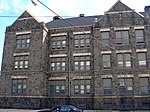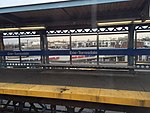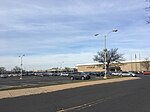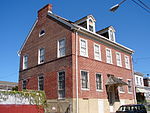Frankford Junction station

Frankford Junction is a railroad junction, and former junction station, located on the border between the Harrowgate neighborhood of Philadelphia and Frankford, Philadelphia. At the junction, the 4-track Northeast Corridor line from Trenton connects with the 2-track Atlantic City Line from Atlantic City in the northeastern portion of Philadelphia about 2.9 miles (4.7 km) northeast of North Philadelphia station. It lies near the intersection of Frankford Avenue and Butler Street, to the west of the interchange between Interstate 95 and the approach to the Betsy Ross Bridge. It has been used for rail transportation since 1832 but has not served as a station since October 4, 1992.
Excerpt from the Wikipedia article Frankford Junction station (License: CC BY-SA 3.0, Authors, Images).Frankford Junction station
Sepviva Street, Philadelphia
Geographical coordinates (GPS) Address Nearby Places Show on map
Geographical coordinates (GPS)
| Latitude | Longitude |
|---|---|
| N 40 ° | E -75.093 ° |
Address
One Dollar Zone
Sepviva Street
19137 Philadelphia
Pennsylvania, United States
Open on Google Maps






